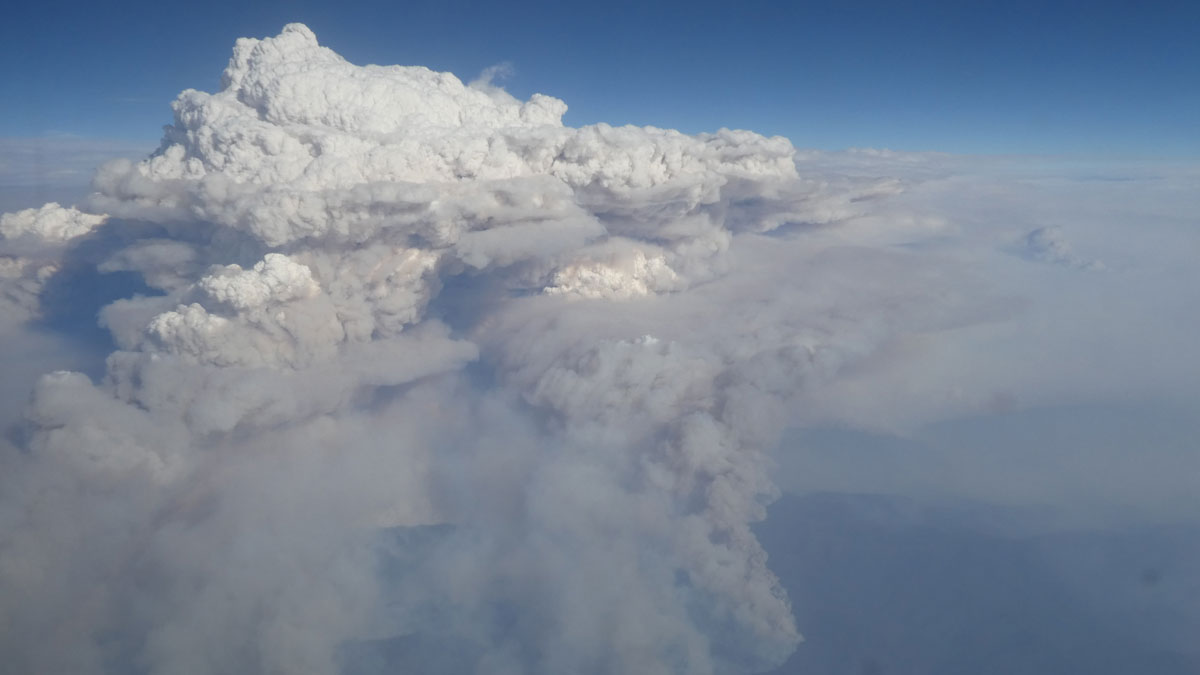The Australian “Black Summer” bushfires produced nearly 1 million tons of smoke in 2019 and 2020, wreaking havoc on local air quality. But new research has shown that this is far from the only impact that the smoke had on the atmosphere.
According to the study, published in the Proceedings of the National Academy of Sciences of the United States of America, thunderstorms generated by the intense wildfires thrust smoke particles well into the stratosphere, where they contributed to a 1% loss of the ozone layer. That’s the amount that should have been recovered over the past decade due to the adoption of the Montreal Protocol, said Susan Solomon, a professor of environmental studies and chemistry at the Massachusetts Institute of Technology and lead author on the paper. “This fire offset that in one blow.”
The ozone layer was first shoved into the public eye in the mid-1970s, after researchers proposed that chlorofluorocarbons (CFCs)—which, at the time, were present in everything from hair spray to refrigerators—could destroy it. Then, in 1985, the Antarctic ozone hole was discovered, which expedited the worldwide ban on the production and use of CFCs. Since then, ozone has steadily recovered at a rate of about 1% per decade—an environmental success story by any measure.
But our protective atmospheric shield may be coming under threat yet again because of climate change and its propensity for triggering bigger and more frequent fires.
However, unlike CFCs, which destroy ozone by releasing chlorine into the stratosphere, smoke destroys ozone in a more roundabout way, Solomon and her coauthors found. As smoke particles shoot upward through the atmosphere, they accumulate water, creating the ideal surface for dinitrogen pentoxide (N2O5) to react; N2O5 can indirectly limit the impact of ozone-depleting compounds, like chlorine monoxide (ClO).
“This idea that smoke particles act as surfaces on which heterogeneous chemistry can occur is a novel concept in the stratosphere, in terms of ozone cycles,” said George Kablick, an atmospheric scientist with the U.S. Naval Research Laboratory (NRL) who was not involved in the study.
“If this process is happening, it can play an important role against [ozone] recovery,” added Kevin Ohneiser, a Ph.D. student at the Leibniz Institute for Tropospheric Research who also was not involved with the study.
Updating Climate Models?
Scientists were well aware that wildfire smoke could reach the stratosphere. Under the right conditions, fires generate pyrocumulonimbus (pyroCb) storm clouds, which can funnel smoke well above aircraft-cruising altitudes. Since record keeping began 9 years ago, researchers have found that pyroCb clouds happen, on average, around 50 times per year, explained David Peterson, a meteorologist who works with Kablick at NRL. Even so, the impact of these storms on ozone wasn’t considered particularly noteworthy.
But that all changed during the record-breaking Black Summer bushfires of 2019–2020. Because of the sheer scale of the event, massive amounts of smoke penetrated the normally pristine upper stratosphere. “It injected a very large plume—larger than any other pyroCb event we’ve seen up until this point,” said Kablick.
“It was comparable to a big volcanic eruption that happened in 2015,” said Solomon.
As a result, the chemistry of the stratosphere was thrown off-kilter. Using satellite measurements, Solomon and her team found that nitrogen dioxide—which needs N2O5 to form at this altitude—reached its lowest level in 2 decades. Without nitrogen dioxide, “ClO will go up,” Solomon explained. “If ClO goes up, then you’ll get ozone loss.”
This might not be the only way through which smoke affects ozone. Other researchers have proposed different chemical mechanisms that take into account the multitude of organic molecules that these particles bring into the stratosphere. Ohneiser has also suggested that smoke can alter the properties of the infamous polar stratospheric clouds that help form the ozone hole every spring. Through this method, ozone loss could be even greater—up to 25% at the poles.
In the end, all these proposed schemes are possible, acknowledged Solomon, adding that if present, they “will only add to the effect that we talk about.”
This begs the question, “If this were to continue in the future, do we need to consider this chemistry in a climate model?” asked Peterson.
Earth’s ozone layer is expected to make a full recovery by 2050 as the remaining CFCs decay. At the same, the risk of megafires is constantly growing as the planet continues to warm. “It’s going to be a bit of a race,” said Solomon, who explained that although this smoke won’t stop ozone recovery completely, it could “slow it down significantly” in years with large fires.
But to what degree this might occur is still an area of active research, as are the other impacts this smoke-induced chemistry will have on the stratosphere. “Ozone is one manifestation of this,” said Peterson, “but there may be other things that we don’t even know about yet.”
—Krystal Vasquez (@caffeinatedkrys), Science Writer

